🎇 Sankt Hans (23 June): how to spend 2–3 days around bonfires on the water
The evening of 23 June in Copenhagen is not just “another summer day”: by eight or nine in the evening, the embankments, beaches and parks are filled with groups of people with blankets, wine and wicker baskets. 🔥 Bonfires are lit on the water, speeches and songs are heard, and the whole city seems to gather for one big summer rally.
Sankt Hans is not a separate ‘tourist attraction’ but a living Danish ritual, and if you are visiting Denmark at the end of June, it makes sense to plan your entire itinerary around the 23rd. Below is a structured plan for 2-3 days: where to watch the bonfires, how to organise the logistics, and who this type of trip is suitable for.
✨ What is Sankt Hans and what makes Copenhagen special
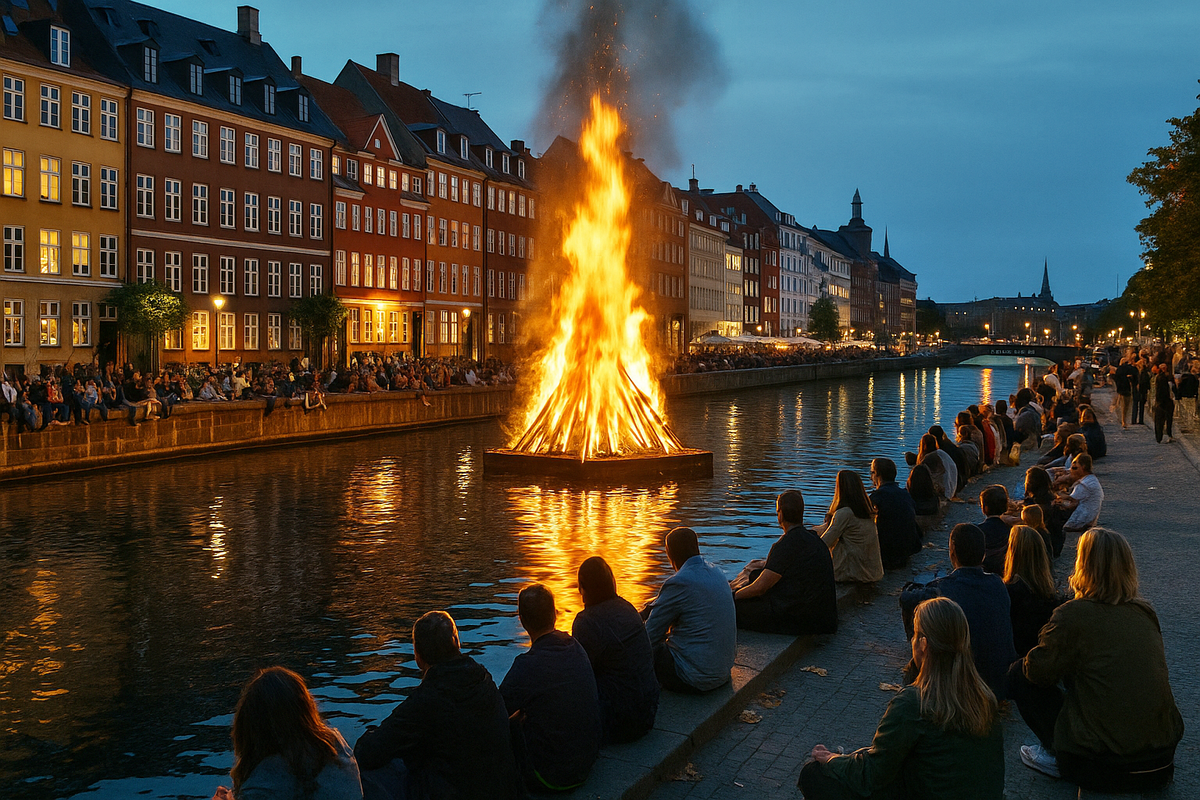
🕯️ Brief cultural context
Sankt Hans Aften — the evening of 23 June, the Danish version of Midsummer: historically, it is a mixture of the Christian eve of St. John the Baptist and even older mid-summer traditions. 🔮 Bonfires were supposed to ‘burn away evil’ and protect the community — today it is more of an excuse to get together on the shore, listen to a speech and sing Midsommervisen.
For most Danes, the modern scenario looks like this:
- a quiet dinner with family or friends,
- in the evening — a trip to the water or the park,
- a communal bonfire, a short speech, a song, sometimes a small concert programme.
🌉 Why Copenhagen is interesting for travellers
The capital has something that small towns don't:
- brightly organised bonfires right in the harbour — on floating platforms or pontoons;
- large city events at venues such as Ofelia Plads, Islands Brygge, and less often — in Tivoli;
- a panorama of water, old facades and city lights as a backdrop for the evening bonfire.
While Sankt Hans in the provinces is more of a ‘local picnic,’ in Copenhagen it is also a visual spectacle: 🔥 bonfires on the water + lights on the embankments + music and crowds of people, which make the evening truly eventful.
📍 Where to watch the bonfires: popular spots and quieter alternatives
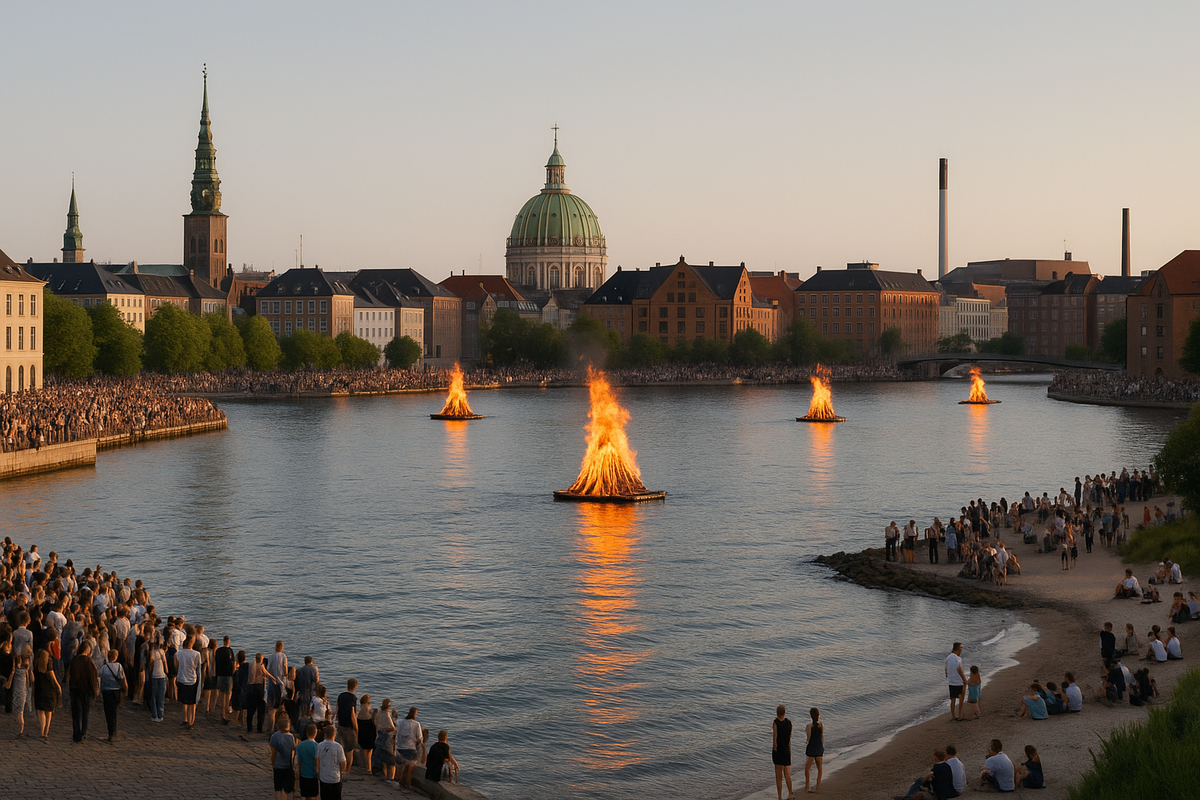
🌟 The most ‘picture-perfect’ locations by the water
If your goal is to get the best view and atmosphere, and crowds don't scare you, head to the central venues:
- Ofelia Plads. A classic ‘bonfire on the water’ format: a platform/pontoon with a fire, a stage, speeches, music, crowds, and a good view of the harbour and the castle line. An excellent spot if you are willing to arrive early and take a place at the water's edge.
- Islands Brygge. A lively waterfront opposite the centre: 🛶 lots of locals, groups with blankets, possible view of one or more bonfires on the water.
- Nyhavn and neighbouring waterfronts. Touristy vibe, bright houses and boats; the bonfire is usually visible from one of the waterfronts or neighbouring venues (depending on the specific year and scenario).
- Reffen / Toldboden / other spots in the north of the harbour. Lots of food, informal atmosphere, a combination of street food and fire on the water — good if you want to combine dinner and celebration without strict decorations.
🌿 Beaches and green areas
If you don't want to be in the centre of the action:
- Amager Strandpark. Beach format: bonfires closer to the sea, open sky, lots of space, slightly less crowded than the harbour. Great if you want to combine Sankt Hans with a day at the beach and a walk by the sea.
- City parks (e.g. Frederiksberg Have and others). Here you can have more homely local bonfires and picnics; fewer tourists, more ‘ordinary neighbours’ who have come with their children and dogs. 🐕
🎭 Quieter spots with a good view
For those who don't like crowds but want to see the lights:
- distant sections of the embankments, slightly away from the official sites;
- bridges and walkways overlooking the harbour;
- quiet ‘pockets’ along the water, from where you can see the main bonfire, but without the crowds.
⚠️ Important note: some years, due to drought and fire hazards, restrictions are imposed on open fires, and some of the bonfires may be cancelled or replaced with light installations. When planning your trip, keep in mind that the format of the event depends on the decisions of the municipality and security services.
📅 2-3 day itinerary around 23 June
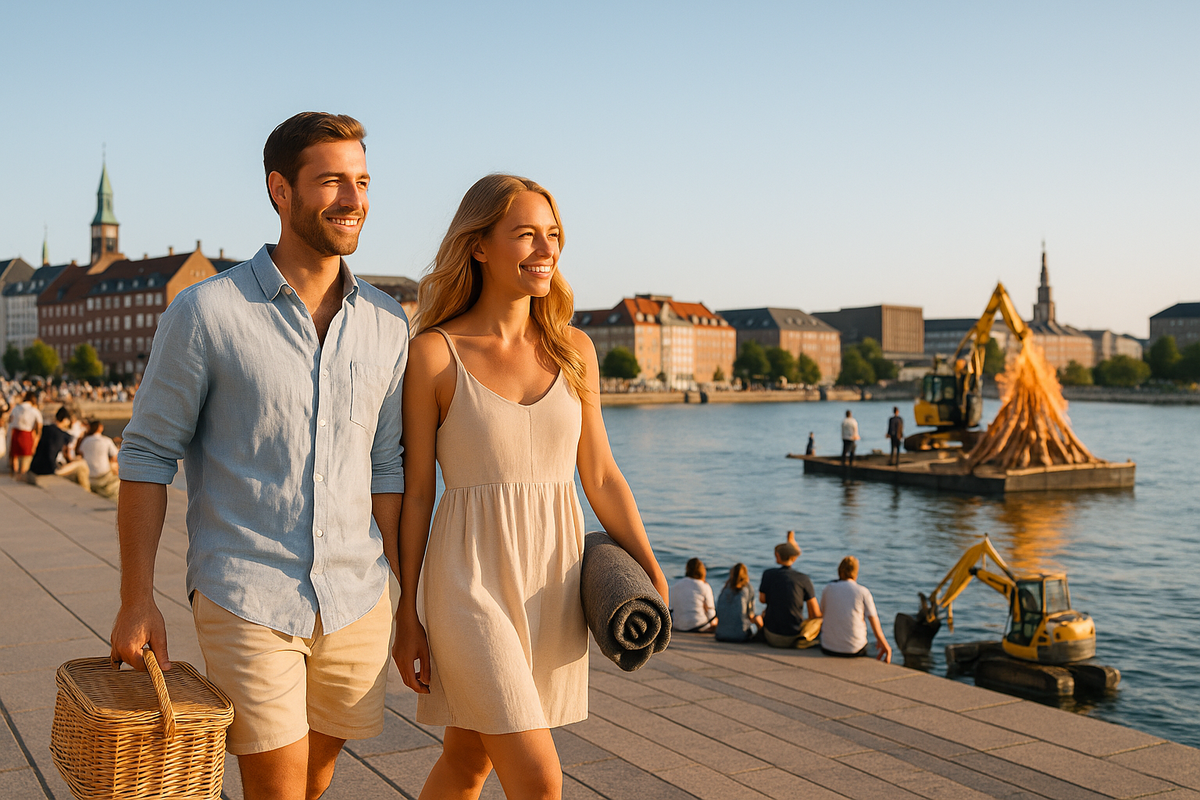
🗓️ Day 1: getting to know the city and exploring the location
Goals for the day: get into the rhythm of the city, ‘feel out’ the locations where you will watch the bonfire.
Morning/day
- Check-in, orientation in the area, purchase of travel passes/maps.
- Basic ‘postcard’ route: city centre, Strøget, Nyhavn, short canal tour. 🚤
- Light lunch in the harbour or city centre area — no rushing to museums.
Evening
- Walk to your chosen spot on Sankt Hans (e.g. Ofelia Plads or Islands Brygge).
- See where it is more convenient to stand/sit, which entrances and exits, where you can wait out the crowd after the bonfire.
- Ask yourself the following questions:
- How long does it take to get from the hotel to the location on foot/by metro?
- Where are the ‘bottlenecks’ — narrow bridges, steps, a single staircase down to the water?
- This will allow you to avoid improvisation during the busiest part of the evening tomorrow.
🔥 Day 2: Sankt Hans — the main evening
Morning/day: save your energy
Don't overload the second day:
- Leave the ‘heavy’ museums for other dates — focus on one attraction (such as the Glyptotek or the National Museum) or a walk in the park.
- Don't have lunch too late, keeping in mind that you will be arriving at the waterfront early in the evening.
Evening: two scenarios — ‘go all the way’ and ‘leave gracefully’
1️⃣ Scenario A: arrive early, leave before the peak
- Arrive at your chosen location about 1.5–2 hours before you plan to light the bonfire.
- Find a spot with a good view and the possibility to move away (not right in the ‘pocket’ by the water).
- Bring a blanket, a light picnic, water, a warm jumper or windbreaker: it is almost always noticeably cooler by the water in the evening than in the city. 🧥
- Watch the speech and the start of the bonfire, take some photos, sit for a while — and leave while most people are still there.
2️⃣ Scenario B: stay until the end
- Assess your strength: you will be in the crowd until late in the evening, plus the journey back.
- Plan your route of departure in advance: will you walk towards the hotel, which bridge will you use, what alternative routes are there?
- Agree in advance on a meeting point ‘if we get lost’ and screenshot a map of the area. 📱
- Be prepared for queues for the toilets, slightly chaotic movement of people and the fact that transport will leave full.
🌤️ Day 3: ‘the day after’ and a gentle ending
If you have a third day, use it as a buffer:
- Late breakfast or brunch in the area where you are staying.
- A leisurely walk along the water: Amager Strandpark, Nordhavn, Refshaleøen or Islands Brygge, but without any events.
- Depending on the weather, a short outing: the beach, Tivoli or Christianshavn with its canals and cafés.
💡 Why it's important to have this ‘day after’: after a late night by the water, dense crowds and possibly alcohol, an early departure on 24 June becomes stressful and risks disrupting logistics.
🚆 Logistics, crowds and safety: how not to get lost
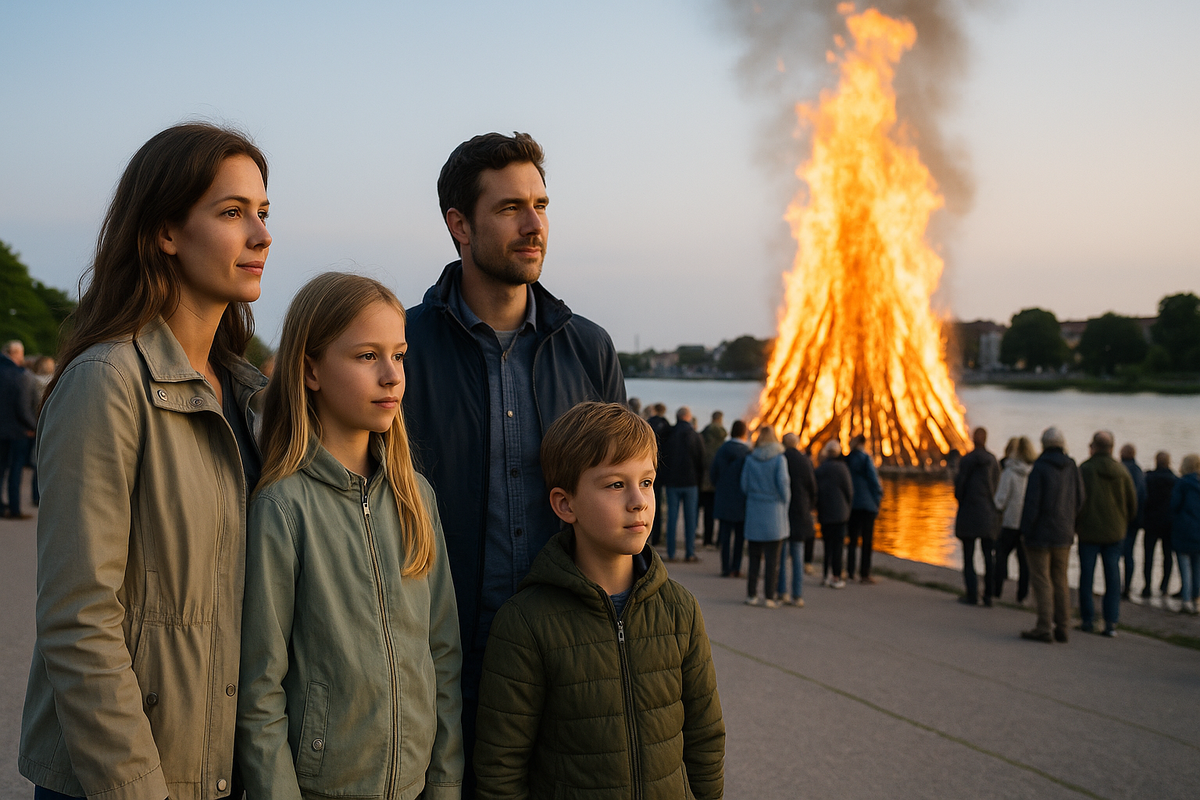
🚴 How to get around on Sankt Hans Eve
- Rely on public transport, walking routes and bicycles.
- Cars and taxis in the area of large bonfires mean traffic jams, blocked entrances and parking lots filled to capacity.
- Plan your return journey:
- if you live in the centre or in Vesterbro/Christianshavn, walk home;
- if you live further away, check in advance which metro/train lines are convenient to use and how far you have to walk to the nearest station.
🧭 Mini checklist for an evening by the bonfire
- Arrive early (1-2 hours) to avoid the busiest time.
- Agree on a meeting point in case someone gets lost.
- Bring: a warm jumper and something to protect you from the wind, water, a light snack, a power bank and a charged phone.
- Do not stand at the water's edge in the narrowest place, especially if you have children with you. 👨👩👧
🔥 Fire safety rules and common sense
- Only participate in officially organised bonfires and venues — fire safety rules are observed and the format is controlled there.
- Do not light your own bonfire on the beach or in the park ‘on a whim’: Denmark has strict restrictions on bonfires in nature, and bans may be imposed in certain seasons.
- If you are travelling with children or do not like crowds, choose more local, smaller bonfires in residential areas or on remote stretches of beach.
✈️ When is the best time to fly and who is Sankt Hans suitable for?
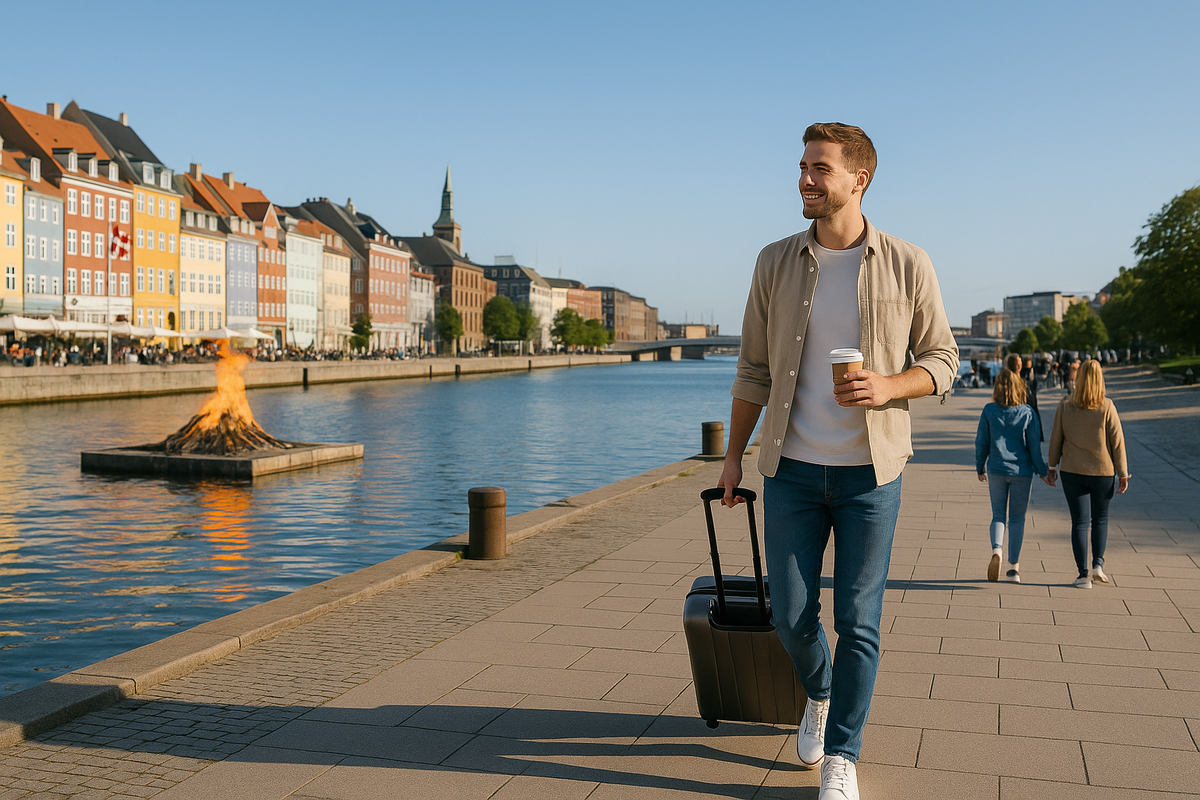
🕒 Departure: immediately or ‘let the city finish playing’?
- Not the best choice — to schedule your departure for the early morning of 24 June.
- After a late night, crowds and the journey back, this will be a very tough pace: there is a risk of sleep deprivation, rushing and logistical errors.
- The best option is to either fly out during the day/evening of the 24th or leave the 24th as a ‘soft day’ and fly out on the 25th.
🎯 For whom is Sankt Hans the ‘best time’ in Denmark
It is suitable for those who:
- love atmospheric street festivals and ‘living’ traditions;
- want to see the Danes ‘in their natural habitat’ and not just in tourist pictures;
- are okay with crowds and late nights for the sake of powerful images of ‘bonfires on the water, songs, and almost white nights.’ 🌙
It will be more difficult for those who:
- have a hard time with noise and crowds;
- are travelling with very young children and want a strictly predictable schedule;
- expect a completely ‘peaceful’ city break without any major events.
🎁 Sankt Hans on 23 June is not just an ‘interesting evening on the calendar,’ but the core around which it makes sense to build a 2-3-day itinerary in Copenhagen. If you choose your location in advance, think through the logistics and don't overload your schedule during the day, the holiday can easily turn from potential chaos into a conscious, very warm summer experience — with bonfires on the water, songs and the feeling that you have become part of an urban ritual for a couple of hours.
❓FAQ
✅ Yes, but it will be a very condensed format: it is better to allow at least two days so as not to combine an evening by the bonfires with the stress of flying.
✅ The most atmospheric spots are Ofelia Plads, Islands Brygge, Nyhavn and Amager Strandpark, but if you want a quieter atmosphere, choose parks and less central embankments.
✅ It is best to arrive 1-2 hours before the bonfire is lit, immediately choosing a spot with a good view and the possibility to leave quietly afterwards.
✅ Yes, if you choose a spot that is not too crowded, stay away from the water's edge and agree on a meeting point in advance in case someone gets lost.
✅ Better not: after a late evening by the water and the journey back, it is wiser to schedule your flight for the afternoon or at least after lunch.





0 comments
Log in to leave a comment